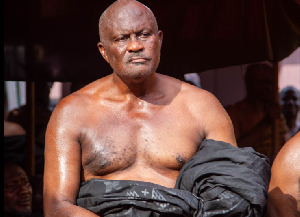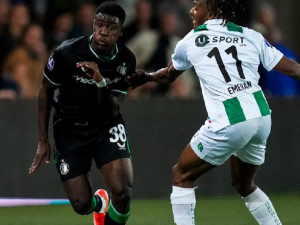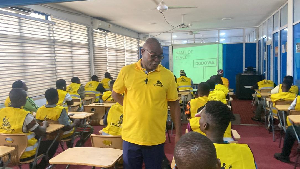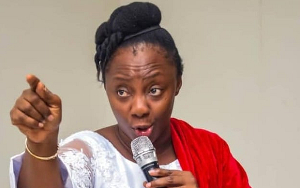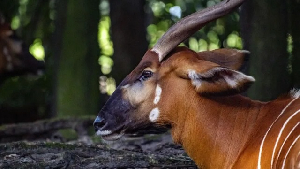We cannot deny or ignore the fact that former President Mahama is one of the luckiest politicians in the contemporary Ghanaian politics.
In fact, Ex-President Mahama admitted after the sudden death of President Mills that he was extremely lucky and most grateful to the late Mills for giving him the opportunity to superintend over Ghana’s economy from 2009 to 2012.
Of course, Mahama was the vice president between January 2009 and July 2012.
Thus, per Ghana’s governance structure, Mahama, as the then vice president, was responsible for Ghana’s economy.
It is also worth mentioning that following President Mills sudden and mysterious death in July 2012, the then vice president, Mahama, (the automatic successor to the presidency) took over the mantle.
In view of the preceding exposition, the Ashanti Regional Secretary of the NPP, Sam Payne, was absolutely right in pointing out during the Wednesday 28th August 2019 edition of Peace FM’s Kookrokoo political show that Mahama has presided over Ghana’s economy for well over 8 years since the inception of Fourth Republican Constitution in 1993.
This article thus seeks to grub into the state of Ghana’s economy in the 8 years under former President Mahama (as the vice president and president).
The sceptics have been insisting somewhat earnestly that despite being in power for nineteen years, the NDC founder, former President J. J. Rawlings, could not initiate any meaningful policies and programme to improve on the socio-economic standards of living of Ghanaians, but only managed to destabilise Ghana’s macroeconomic indicators.
Unsurprisingly, therefore, when President Kufuor took over the mantle of presidency on 7th January 2001, he encountered insurmountable difficulties in running the country as there was not much funds left in the national purse to plan anything substantial.
Ghana was then declared as Highly Indebted Poor Country (HIPC). The newly elected President Kufuor had a tough decision to make, by either accepting or rejecting the HIPC status.
However, the forward thinking President Kufuor chose to ingest an insipid pill with a view to shrugging off the insidious ailment.
President Kufuor rightly assented to the HIPC status in 2001.
On reflection though, the benefits of the HIPC were unprecedented during former President Kufuor’s administration, from (2001-2008).
As a consequence, macroeconomic indicators begun to stabilize and Ghana’s debt stock was significantly reduced by about $4 billion within that period (BOG).
Besides, as a result of the HIPC initiative and prudent borrowing, Ghana’s external debt stock actually declined from $6.1 billion in 2000 to$3.8 billion by 2008 (BOG). It was an unprecedented achievement, so to speak.
It is also worth stressing that the average GDP growth of the NDC from 1993-2000 was 3.8% while that of the NPP from 2001-2008 was5.2% with economic growth reaching 6.3% in 2007 and 9.1 in 2009 (GSS/BOG).
In fact, it would not be an understatement to point out that former President Kufuor’s pragmatic policies and programmes reaped tremendous results.
But due to time and space constraints, I will only delineate a few of his wonderful achievements during his tenure in office.
1. Helped moved Ghana from HIPC status to Lower Middle Income status.
2. Ghana received a debt relief of around $4 billion, spreading over 20 years period.
3. Built numerous infrastructural projects, including not less than 5 interchanges. However, the then opposition communicators led by John Dramani Mahama said back then that the erection of infrastructural projects remains only an exercise in mediocrity.
4. Discovered oil in commercial quantities before handing over power to the late Mills.
5. Increased the economic growth from around 3.5 in 2001 to around 9.1 in 2009.
6. Quadrupled Ghana’s GDP to $28 billion by 2008.
7. Introduced free Maternal Care.
8. Implemented National Health Insurance Scheme.
9. Introduced Metro Mass Transit.
10. Implemented School Feeding Programme.
11. Introduced the National Youth Employment Programme, known as GYEEDA.
12. Implemented the Livelihood Empowerment Against Poverty (LEAP).
In synopsising, the list of former President Kufuor’s achievements is not exhaustive. However, I would not be able to list all of them at this point in time. All that I can state is that, former President Kufuor did so much to improve on Ghana’s economic fortunes.
If we stroll down memory lane, three years after the Kufuor’s NPP government had worked tirelessly and discovered oil in commercial quantities; the NDC government led by the late President Mills only had the easiest job of turning on the valve at an offshore platform in December 2010 to pump the first commercial oil.
Ghana then took its rightful place among the petroleum exporting countries. And believe it or not, Ghana started to export crude oil which boosted the economic growth.
The economy grew favourably from around 8.4 per cent to around 14 per cent by 2011 and Ghana subsequently reached the Lower Middle Income status.
Ghana’s GDP grew exponentially from $28 billion to a staggering $47 billion by 2011.
Ghana was then cited as the world's fastest growing economy in 2010 (Economy Watch, 2010).
Regrettably, however, following the sudden and mysterious death of President Mills in July 2012, Ghana’s economy took a precipitous nosedive.
Take, for example, during the 2012 electioneering campaign, the late Mills successor, Ex-President Mahama, and his NDC apparatchiks went haywire in their desperation to retain power.
Thus they wilfully broke all conventions. Many government departments spent over and above their allocated budgets.
The previously single digit inflation and budget deficit doubled astronomically.
The GH9.5 billion debt former President Kufuor and his NPP government left in 2009 ballooned miraculously to GH122.4 billion as of December 2016 with nothing or little to show for.
Ghana’s economic growth slowed for the fourth consecutive year to an estimated 3.4% in 2015 from 4% in 2014 as energy rationing (dumsor), high inflation, and ongoing fiscal consolidation weighed on economic activity (World Bank, 2016).
Moreover, President Mahama’s government nauseatingly dragged the economic growth from around 14%in 2011 to around 3.4% as of December 2016.
In addition, the high inflation rate remain elevated at 18.5% in February 2016 compared to 17.7% in February 2015, even after the Central Bank’s 500 bps policy rate hikes (the inflation stood at 15.4%as of October 2016).
Unsurprisingly, therefore, during the epoch of Mahama’s coarse governance, some concerned patriots like Jake Obetsebi Lamptey of blessed memory lamented: “Ghanaians are worried because the economy is being handled in a manner reminiscent of the NDC’s mishandling of the economy in 2000. We do not need to return to HIPC status.”
Ex-President Mahama, as a matter of fact, did not work his socks off to improve on the socio-economic living standards of Ghanaians.
Take, for example, former President Kufuor worked strenuously and quadrupled Ghana’s GDP to a staggering $28 billion in 2008, and the late Mills inherited oil in commercial quantities and managed to increase the GDP to $47 billion by 2011.
However, President Mahama disappointingly dragged the GDP to an incredible $40billion as of December 2016.
But despite the huge economic mess created by the erstwhile Mahama government amid stunted economic growth, the Akufo-Addo’s government, before the deadly coronavirus, efficiently raised the economic growth from a disappointing 3.4 % as of December 2016 to a favourable 8.6 % within a short space of time.
Again, the NPP government marvellously reversed the inflation rate to a single digit-around 7.5%from a little over 15 %as of December 2016.
Evidently, Ghana’s economy under former President Mahama was not so good. In brief, he wilfully imposed untold economic hardships on Ghanaians.
K. Badu, UK.
k.badu2011@gmail.com
Opinions of Friday, 2 October 2020
Columnist: Kwaku Badu







